4-壬基酚,标准溶液,溶剂:乙腈, 1000μg/mL
产品编号:西域质检-TM25754| CAS NO:104-40-5| 分子式:C15H24O| 分子量:220.350
本网站销售的所有产品仅用于工业应用或者科学研究等非医疗目的,不可用于人类或动物的临床诊断或者治疗,非药用,非食用,
4-壬基酚
This certificate is designed in accordance with ISO 17034 and ISO Guide 31. This reference material (RM) was designed,produced and verified in accordance with ISO/IEC 17025, ISO 17034 and a registered quality management system ISO 9001.

| QC Test Results | ||||
| Item | Test Results | |||
| Analysis method(分析方法) | HPLC/DAD | |||
| Concentration(浓度) | 1000μg/mL | |||
| Uncertainty | 2% | |||
| Expiry Date(失效日期) | 2023-Jan-13 | |||
The certified value(s) and uncertainty(ies) are determined in accordance with ISO 17034 with an 95% confidence level (k=2). Uncertainty is based on the Total Combined Uncertainty, including uncertainties of preparation, purity of neat materials, homogeneity, stability testing.
The balances used for gravimetric measurements are calibrated with weights traceable to the national standards. The calibration of the balances is verified annually by an external accredited calibration service. This analysis method has been verified using an approach consistent with ISO 17034:2016 & ISO 17025:2017.
| CERTIFICATE ON | QC SIGNATURE | |
| 2022-Jan-14 |

|
RM Release |
相关文档
化学品安全说明书(MSDS)
下载MSDS质检证书(COA)
相关产品
| 符号 |
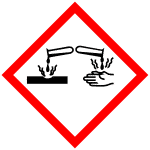
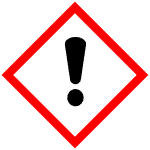
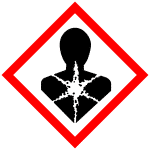
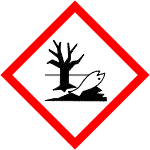
GHS05, GHS07, GHS08, GHS09 |
|---|---|
| 信号词 | Danger |
| 危害声明 | H302-H314-H361-H411 |
| 警示性声明 | P260-P280-P301 + P312 + P330-P303 + P361 + P353-P304 + P340 + P310-P305 + P351 + P338 |
| 个人防护装备 | Eyeshields;Faceshields;full-face particle respirator type N100 (US);Gloves;respirator cartridge type N100 (US);type P1 (EN143) respirator filter;type P3 (EN 143) respirator cartridges |
| 危害码 (欧洲) | C: Corrosive; |
| 风险声明 (欧洲) | R22;R34;R52/53 |
| 安全声明 (欧洲) | S26-S36/37/39-S45-S61-S60 |
| 危险品运输编码 | UN 3145 8/PG 2 |
| WGK德国 | 3 |
| RTECS号 | SM5650000 |
| 包装等级 | III |
| 危险类别 | 8 |
| 海关编码 | 2907131000 |
Synonym:p-Nonylphenol Section 2 - COMPOSITION, INFORMATION ON INGREDIENTS
Risk Phrases: 43 53 Section 3 - HAZARDS IDENTIFICATION EMERGENCY OVERVIEW
May cause sensitization by skin contact. May cause long-term adverse effects in the aquatic environment. Potential Health Effects Eye: May cause eye irritation. Skin: May cause skin irritation. May cause skin sensitization, an allergic reaction, which becomes evident upon re-exposure to this material. Ingestion: May cause digestive tract disturbances. May be harmful if swallowed. Inhalation: May cause respiratory tract irritation. Chronic: No information found. Section 4 - FIRST AID MEASURES Eyes: Flush eyes with plenty of water for at least 15 minutes, occasionally lifting the upper and lower eyelids. Get medical aid immediately. Skin: Get medical aid. Immediately flush skin with plenty of water for at least 15 minutes while removing contaminated clothing and shoes. Wash clothing before reuse. Ingestion: If victim is conscious and alert, give 2-4 cupfuls of milk or water. Never give anything by mouth to an unconscious person. Get medical aid immediately. Inhalation: Get medical aid immediately. Remove from exposure and move to fresh air immediately. If not breathing, give artificial respiration. If breathing is difficult, give oxygen. Notes to Physician: Section 5 - FIRE FIGHTING MEASURES General Information: As in any fire, wear a self-contained breathing apparatus in pressure-demand, MSHA/NIOSH (approved or equivalent), and full protective gear. During a fire, irritating and highly toxic gases may be generated by thermal decomposition or combustion. Use water spray to keep fire-exposed containers cool. Containers may explode in the heat of a fire. Extinguishing Media: Use agent most appropriate to extinguish fire. Cool containers with flooding quantities of water until well after fire is out. Use water fog, dry chemical, carbon dioxide or alcohol type foam. Section 6 - ACCIDENTAL RELEASE MEASURES General Information: Use proper personal protective equipment as indicated in Section 8. Spills/Leaks: Absorb spill with inert material (e.g. vermiculite, sand or earth), then place in suitable container. Clean up spills immediately, observing precautions in the Protective Equipment section. Provide ventilation. Section 7 - HANDLING and STORAGE Handling: Wash thoroughly after handling. Remove contaminated clothing and wash before reuse. Use with adequate ventilation. Avoid contact with eyes, skin, and clothing. Avoid ingestion and inhalation. Storage: Keep container closed when not in use. Store in a cool, dry, well-ventilated area away from incompatible substances. Section 8 - EXPOSURE CONTROLS, PERSONAL PROTECTION Engineering Controls: Use process enclosure, local exhaust ventilation, or other engineering controls to control airborne levels. Exposure Limits CAS# 104-40-5: Personal Protective Equipment Eyes: Wear appropriate protective eyeglasses or chemical safety goggles as described by OSHA's eye and face protection regulations in 29 CFR 1910.133 or European Standard EN166. Skin: Wear appropriate protective gloves to prevent skin exposure. Clothing: Wear appropriate protective clothing to minimize contact with skin. Respirators: A respiratory protection program that meets OSHA's 29 CFR 1910.134 and ANSI Z88.2 requirements or European Standard EN 149 must be followed whenever workplace conditions warrant respirator use. Section 9 - PHYSICAL AND CHEMICAL PROPERTIES Physical State: Liquid Color: clear pale yellow Odor: phenol-like pH: Not available. Vapor Pressure: 0.109 Pa @ 25C Viscosity: Not available. Boiling Point: 293 - 297 deg C @ 760.00mm Hg Freezing/Melting Point: Not available. Autoignition Temperature: Not available. Flash Point: 141 deg C ( 285.80 deg F) Explosion Limits, lower: N/A Explosion Limits, upper: N/A Decomposition Temperature: Solubility in water: Slightly soluble. Specific Gravity/Density: .9450g/cm3 Molecular Formula: C15H24O Molecular Weight: 220.35 Section 10 - STABILITY AND REACTIVITY Chemical Stability: Stable under normal temperatures and pressures. Conditions to Avoid: Incompatible materials, strong oxidants. Incompatibilities with Other Materials: Strong oxidizing agents, acids. Hazardous Decomposition Products: Carbon monoxide, irritating and toxic fumes and gases, carbon dioxide. Hazardous Polymerization: Not available. Section 11 - TOXICOLOGICAL INFORMATION RTECS#: CAS# 104-40-5: SM5630000 LD50/LC50: CAS# 104-40-5: Oral, rat: LD50 = 1620 mg/kg. Carcinogenicity: 4-Nonylphenol - Not listed by ACGIH, IARC, or NTP. Other: See actual entry in RTECS for complete information. Section 12 - ECOLOGICAL INFORMATION Other No information available. Section 13 - DISPOSAL CONSIDERATIONS Dispose of in a manner consistent with federal, state, and local regulations. Section 14 - TRANSPORT INFORMATION IATA Shipping Name: ENVIRONMENTALLY HAZARDOUS SUBSTANCE, LIQUID, N.O.S .* Hazard Class: 9 UN Number: 3082 Packing Group: III IMO Shipping Name: ENVIRONMENTALLY HAZARDOUS SUBSTANCE, LIQUID, N.O.S . Hazard Class: 9 UN Number: 3082 Packing Group: III RID/ADR Shipping Name: ENVIRONMENTALLY HAZARDOUS SUBSTANCE, LIQUID, N.O.S . Hazard Class: 9 UN Number: 3082 Packing group: III Section 15 - REGULATORY INFORMATION European/International Regulations European Labeling in Accordance with EC Directives Hazard Symbols: XI Risk Phrases: R 43 May cause sensitization by skin contact. R 53 May cause long-term adverse effects in the aquatic environment. Safety Phrases: S 24 Avoid contact with skin. S 37 Wear suitable gloves. S 61 Avoid release to the environment. Refer to special instructions/safety data sheets. WGK (Water Danger/Protection) CAS# 104-40-5: 3 Canada CAS# 104-40-5 is listed on Canada's DSL List. CAS# 104-40-5 is not listed on Canada's Ingredient Disclosure List. US FEDERAL TSCA CAS# 104-40-5 is listed on the TSCA inventory. SECTION 16 - ADDITIONAL INFORMATION N/A |
|
~85% 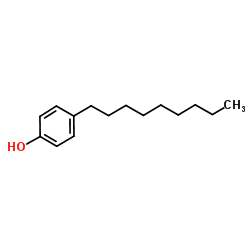
104-40-5 |
| 文献:Corti, A.; Frassinetti, S.; Vallini, G.; D'Antone, S.; Fichi, C.; Solaro, R. Environmental Pollution (Amsterdam, Netherlands), 1995 , vol. 90, # 1 p. 83 - 88 |
|
~% 
104-40-5 |
| 文献:WO2004/54954 A1, ; Page 14 ; |
|
~% 
104-40-5 |
| 文献:Chemical and Pharmaceutical Bulletin, , vol. 37, # 6 p. 1619 - 1621 |
|
~% 
104-40-5 |
| 文献:Chemical and Pharmaceutical Bulletin, , vol. 37, # 6 p. 1619 - 1621 |
|
~99% 
104-40-5 |
| 文献:Ohsawa; Hatano; Kayoh; Kotabe; Oishi Tetrahedron Letters, 1992 , vol. 33, # 38 p. 5555 - 5558 |
|
~% 
104-40-5 |
| 文献:Journal fuer Praktische Chemie (Leipzig), , vol. 331, # 4 p. 617 - 630 |
|
~% 
104-40-5 |
| 文献:Environmental Pollution (Amsterdam, Netherlands), , vol. 90, # 1 p. 83 - 88 |
|
~% 
104-40-5 |
| 文献:Xenobiotica, , vol. 28, # 8 p. 745 - 757 |
| 上游产品 8 | |
|---|---|
| 下游产品 10 | |

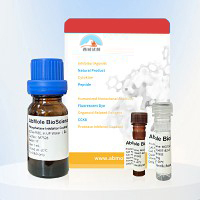




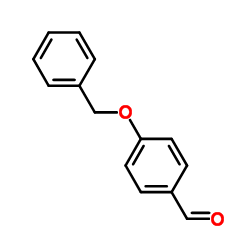
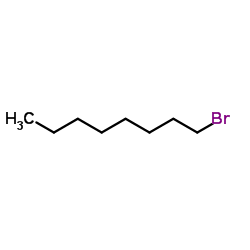
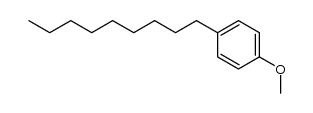

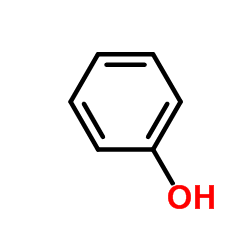

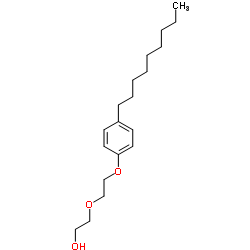

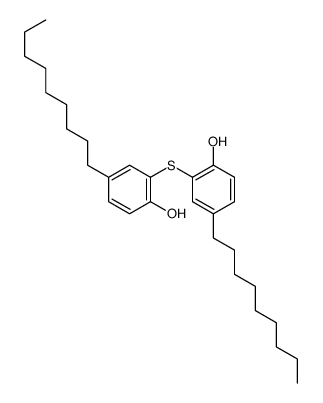
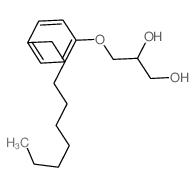
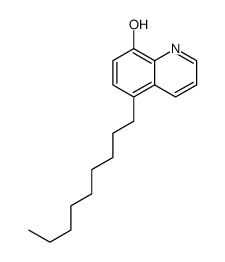
![6-[1-(hydroxyamino)ethylidene]-4-nonylcyclohexa-2,4-dien-1-one结构式](/20230522/93913-80-5.png)
![6-[(hydroxyamino)-phenylmethylidene]-4-nonylcyclohexa-2,4-dien-1-one结构式](/20230522/59986-54-8.png)
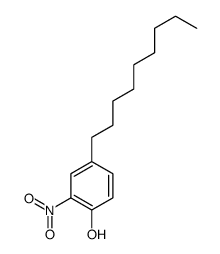





 浙公网安备 33010802013016号
浙公网安备 33010802013016号